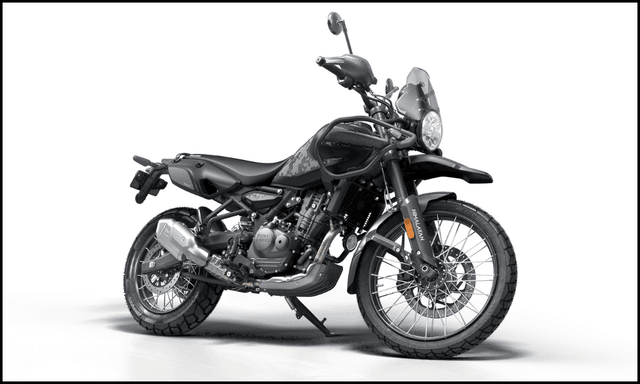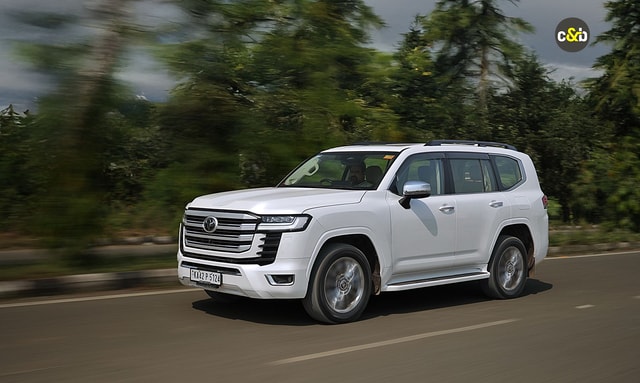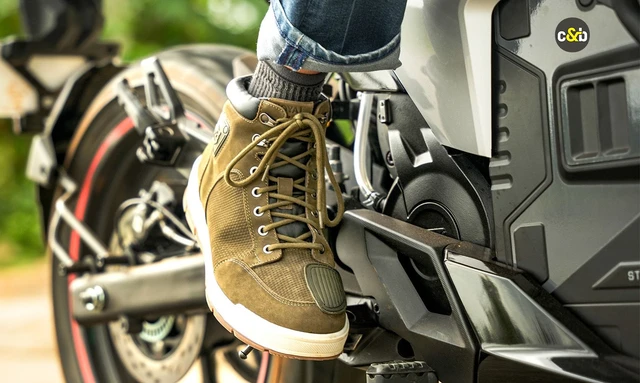Active Safety Guidance for a Safe Driving Experience

- Blindspot is an area that's not visible in the driver's peripheral vision
- Blind spots are locations where accidents take place
- Car manufacturers have made rapid developments to improve safety measures
There are several reasons why driving in itself is thrilling but also dangerous at the same time. Trying to navigate through crowds of vehicles while focusing on the different aspects of driving and avoiding accidents is huge pressure on drivers. Thus, new technologies are being developed continuously to help drivers drive safely on the road. It would be interesting to take two such safety measures – blind-spot monitoring and rear cross-traffic alert.

Photo Credit: pixabay.com
Blind-spot monitoring system
This technology was introduced back in 2007. Sensors are mounted on the rear side or side view mirrors that emit electromagnetic waves. They reflect from vehicles that are entering the car's blind spots. Research shows that accidents reportedly go down by 14% due to blind-spot monitoring systems. Moreover, chances of injuries are reduced by 23% due to these systems.

Photo Credit: pixabay.com
The car then provides an alert (in the form of a light or flashing light accompanied with a chime) to alert the driver aware of the conditions. Vehicles with lights inside the car are better since they are not obstructed by bad weather.
Often, instead of sensors, cameras are mounted inside the mirror housing. These cameras capture a live feed of the surroundings. However, blind spot monitoring is diminished in the case of this system.
New technologies are being developed to integrate blind-spot monitoring with emergency lane monitoring to prevent accidents!
The major problem with blind-spot monitoring systems is the pace of the vehicles. If the cars are moving too fast, the sensors have difficulty accurately providing information to the drivers and there is a certain lag. Sometimes, the alert comes too late for the driver to take preventive measures leading to increased chances of accidents. Improvements need to be made to the system for making driving safer.

Photo Credit: pixabay.com
Rear cross-traffic alert system
RCTA or Rear cross-traffic alert systems use similar sensors as blind-spot monitoring systems. These sensors are placed at the rear end of the vehicles.
For example, if a person is trying to move out of a parking spot and there is heavy traffic around, it can be hard for the driver to track all the commotion. RCTA sensors emit electromagnetic waves that bounce off the cars moving at the back and provide directions to the driver. The infotainment system provides a visual and audible signal to the driver.
Reverse AEB systems are being developed actively along with these RCTA systems. So, if the sensors detect any potential collisions, the brakes are applied immediately to avoid accidents. There are still many problems that need to be fixed when it comes to AEBs but rapid improvements are being made to further improve these systems' efficiency.
Trending News
 1 min readNew KTM RC 160 Spotted Testing
1 min readNew KTM RC 160 Spotted Testing
Latest News
 Jafar Rizvi | Nov 21, 2025Motoverse 2025: Royal Enfield Bullet 650, Flying Flea S6 Make India DebutPrices for the Bullet 650 are expected to be announced in the coming months.3 mins read
Jafar Rizvi | Nov 21, 2025Motoverse 2025: Royal Enfield Bullet 650, Flying Flea S6 Make India DebutPrices for the Bullet 650 are expected to be announced in the coming months.3 mins read car&bike Team | Nov 21, 2025Royal Enfield Himalayan 450 Mana Black Launched At Rs 3.37 LakhThe Mana Black trim costs Rs 17,000 more than the Hanle Black and mainly adds a new colour scheme, along with a set of extra accessories.1 min read
car&bike Team | Nov 21, 2025Royal Enfield Himalayan 450 Mana Black Launched At Rs 3.37 LakhThe Mana Black trim costs Rs 17,000 more than the Hanle Black and mainly adds a new colour scheme, along with a set of extra accessories.1 min read car&bike Team | Nov 21, 2025Skoda Auto Volkswagen India Crosses 2 Million Unit Production MilestoneThe Indian arm of the VW Group commenced local manufacturing of cars back in 2001.1 min read
car&bike Team | Nov 21, 2025Skoda Auto Volkswagen India Crosses 2 Million Unit Production MilestoneThe Indian arm of the VW Group commenced local manufacturing of cars back in 2001.1 min read Jaiveer Mehra | Nov 21, 2025Genesis Magma GT Concept Previews Future Mid-Engine Halo CarFuture halo car to also enter GT racing competition.1 min read
Jaiveer Mehra | Nov 21, 2025Genesis Magma GT Concept Previews Future Mid-Engine Halo CarFuture halo car to also enter GT racing competition.1 min read Jaiveer Mehra | Nov 21, 2025Hyundai Crater Off-Road SUV Concept Unveiled At LA Auto Show 2025Hyundai says the boxy SUV concept ‘explores the next evolution’ of its more rugged XRT model series.1 min read
Jaiveer Mehra | Nov 21, 2025Hyundai Crater Off-Road SUV Concept Unveiled At LA Auto Show 2025Hyundai says the boxy SUV concept ‘explores the next evolution’ of its more rugged XRT model series.1 min read Shams Raza Naqvi | Nov 20, 2025Don’t Need To Protect Image And Constraints: Lexus President Takashi WatanabeIn a ringside chat with car&bike at this year's Japan Mobility Show, Lexus International President Takashi Watanabe lists out what’s in store for the brand in the years to come.1 min read
Shams Raza Naqvi | Nov 20, 2025Don’t Need To Protect Image And Constraints: Lexus President Takashi WatanabeIn a ringside chat with car&bike at this year's Japan Mobility Show, Lexus International President Takashi Watanabe lists out what’s in store for the brand in the years to come.1 min read
 Janak Sorap | Nov 19, 2025Hero Xpulse 210 Vs Kawasaki KLX 230 Comparison Review: Dual-Sport DilemmaWith a price difference of just Rs 12,000, which of the two dual-sport motorcycles is meant for you?1 min read
Janak Sorap | Nov 19, 2025Hero Xpulse 210 Vs Kawasaki KLX 230 Comparison Review: Dual-Sport DilemmaWith a price difference of just Rs 12,000, which of the two dual-sport motorcycles is meant for you?1 min read Jaiveer Mehra | Nov 17, 20252025 Toyota Land Cruiser 300 Review: Beast From The EastThe Land Cruiser name may have a long and storied history, but does it fit the bill for an Rs 2 crore-plus SUV in India?13 mins read
Jaiveer Mehra | Nov 17, 20252025 Toyota Land Cruiser 300 Review: Beast From The EastThe Land Cruiser name may have a long and storied history, but does it fit the bill for an Rs 2 crore-plus SUV in India?13 mins read Seshan Vijayraghvan | Nov 17, 2025Kia Syros 1.0 Turbo Petrol: 6000 km Long-Term Review – Final Report!I lived with the Syros for more than 6000 km, over 3 months, and in this final report, I am going to talk about the Pros, the Cons, and everything in between.1 min read
Seshan Vijayraghvan | Nov 17, 2025Kia Syros 1.0 Turbo Petrol: 6000 km Long-Term Review – Final Report!I lived with the Syros for more than 6000 km, over 3 months, and in this final report, I am going to talk about the Pros, the Cons, and everything in between.1 min read car&bike Team | Nov 13, 2025Numeros n-First First Ride Review: Motorbike-Inspired EV ScooterWe test rode the n-First i-max+ in busy Bengaluru roads recently. It’s ability to tackle city roads well and comfortable seats make it a scooter worth a check. Read on to know if it makes sense for you to consider buying it.3 mins read
car&bike Team | Nov 13, 2025Numeros n-First First Ride Review: Motorbike-Inspired EV ScooterWe test rode the n-First i-max+ in busy Bengaluru roads recently. It’s ability to tackle city roads well and comfortable seats make it a scooter worth a check. Read on to know if it makes sense for you to consider buying it.3 mins read Preetam Bora | Nov 12, 2025Royal Enfield Nomad WP Mid Ankle Riding Boots ReviewThe Royal Enfield Nomad Waterproof mid-ankle boots have robust construction, good fit and a waterproof liner as well. But are they worth Rs. 7,500 or should you give them a pass?4 mins read
Preetam Bora | Nov 12, 2025Royal Enfield Nomad WP Mid Ankle Riding Boots ReviewThe Royal Enfield Nomad Waterproof mid-ankle boots have robust construction, good fit and a waterproof liner as well. But are they worth Rs. 7,500 or should you give them a pass?4 mins read
































































































































